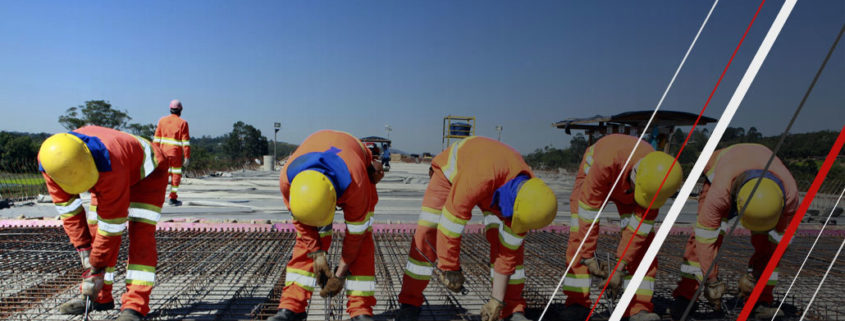NHS England is proposing 10 new healthy towns, with 76,00 new homes, where residents can win cinema tickets, low cost gym membership and money off their shopping bills if they hit their exercise targets, under plans by the NHS to promote healthy living.
Bikes, running tracks on pavements and community gyms could also become perks of a house sale to encourage residents to become more active.
Citiesmode, an urban planning company who have beat stiff competition to begin designing one of the towns in Runcorn, are offering an urban obstacle course linking public gym equipment and sprinting tracks as well as free bikes, a community kitchen and universal wifi to help access healthy apps and virtual access to GP services.
Simon Stevens, NHS England Chief Executive said that “the much-needed push to kick-start affordable housing across England creates a golden opportunity for the NHS to help promote health and keep people independent.
As these new neighbourhoods and towns are built, we’ll kick ourselves if in ten years time we look back having missed the opportunity to ‘design out’ the obesogenic environment, and ‘design in’ health and wellbeing.
We want children to have places where they want to play with friends and can safely walk or cycle to school – rather than just exercising their fingers on video games.
We want to see neighbourhoods and adaptable home designs that make it easier for older people to continue to live independently wherever possible.
And we want new ways of providing new types of digitally-enabled local health services that share physical infrastructure and staff with schools and community groups.”
The first 10 sites have now been chosen and are:
Whitehill and Bordon, Hampshire – 3,350 new homes on a former army barracks. A new care campus will co-locate ‘care-ready homes’ specially designed to be adaptable to the needs of people with long term conditions with a nurse-led treatment centre, pharmacy and integrated care hub.
Cranbrook, Devon – 8,000 new residential units. Data suggests that Cranbrook has three times the national average of 0-4 year olds and will look at how prevention and healthy lifestyles can be taught in schools from a young age.
Darlington – 2,500 residential units across three linked sites in the Eastern Growth Zone. Darlington is developing a ‘virtual care home’ offer where a group of homes with shared facilities are configured to link directly into a digital care hub, avoiding institutionalisation in nursing homes.
Barking Riverside – 10,800 residential units on London’s largest brownfield site.
Whyndyke Farm in Fylde, Lancashire – 1,400 residential units.
Halton Lea, Runcorn – 800 residential units.
Bicester, Oxon – 393 houses in the Elmsbrook project, part of 1300 new homes planned.
Northstowe, Cambridgeshire – 10,000 homes on former military land.
Ebbsfleet Garden City, Kent – up to 15,000 new homes in the first garden city for 100 years.
Barton Park, Oxford – 885 residential units.
According to the NHS, options to be tested at some of these sites include fast food-free zones near schools, designing safe and appealing green spaces, building dementia-friendly streets and ensuring people can access new GP services using digital technology. The developments will reflect the needs of their local populations when working up their plans. Design questions being asked include: Why are children happy to walk all day round a theme park but often get bored on every-day journeys? Could adventure areas be designed into streets to encourage walking and play? And for the aging population, how far away are we from a town where more older people live independently and safely in their own home, backed by better technology and social support?
The key facts presented by the NHS include:
Britain loses over 130 million working days to ill-health each year.
19% of children aged 10-11 were obese and a further 14 per cent were overweight in 2014/15. The figures for 4-5 year olds were 9% obese and 13% overweight. In other words, the proportion of children who are obese doubles during primary school – from one in ten five year olds, to one in five eleven year olds.
Today only 21% of children play outdoors, compared to 71% of their parents when they were children, Design Council figures show.
A Design Council guide also estimates that a quarter of British adults now walk for less than nine minutes a day.
Physical inactivity is a direct factor in 1 in 6 deaths, and has an overall economic impact of £7.4 billion.
The Building Research Establishment has published a report on the cost of poor quality housing to the NHS. It estimates that the 3.5m homes in England that have serious hazards such as damp and pests has led to health problems that cost the NHS at least £1.4bn every year.
Professor Kevin Fenton from Public Health England stated that “Some of the UK’s most pressing health challenges – such as obesity, mental health issues, physical inactivity and the needs of an ageing population – can all be influenced by the quality of our built and natural environment.
The considerate design of spaces and places is critical to promote good health. This innovative programme will inform our thinking and planning of everyday environments to improve health for generations to come.”




